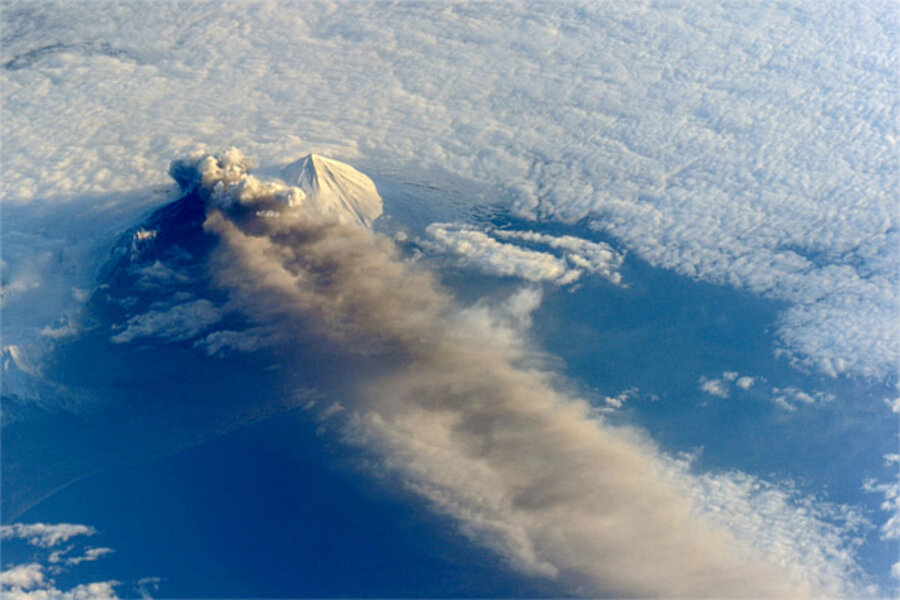Alaska volcano spews five-mile-high ash plume
Loading...
| Anchorage, Alaska
An Alaska volcano spewing ash and lava for the past six weeks erupted with new intensity early on Tuesday, belching a plume of cinders 5 miles (8 km) into sky and onto a nearby town and disrupting local flights, officials said.
The eruptions from Pavlof Volcano, on the Alaska Peninsula 590 miles (950 km) southwest of Anchorage, were its most powerful since its current eruptive phase began with low-level rumblings in mid-May, according to scientists at the federal-state Alaska Volcano Observatory.
The latest series of more powerful ash-producing blasts from the crater of the 8,261-foot (2,518-meter) volcano started late on Monday and continued overnight into Tuesday, scientists said.
"For some reason we can't explain, it picked up in intensity and vigor," said Tina Neal, an observatory geologist.
While the ash plume has so far remained too low in the sky to affect jetliner traffic, topping out at an altitude of 28,000 feet, smaller planes had to fly around it, officials said. Anchorage-based PenAir canceled one flight and re-routed others, said Missy Roberts, a company vice president.
Ash has dusted King Cove, a town of about 900 people located 30 miles southwest of Pavlof, the Alaska Volcano Observatory reported.
The National Weather Service issued an ash advisory for the region, warning of breathing problems for people with respiratory ailments and potential damage to exposed electronic equipment.
A second Alaska Peninsula volcano continued a low-intensity eruption, the observatory said. Ash from Veniaminof Volcano, 485 miles (780 km) southwest of Anchorage, has been limited to the area around its 8,225-foot (2,507-meter) summit, the observatory said.
The eruptions at Pavlof and Veniaminof are unrelated, scientists say.
A third, more remote, Alaska volcano remained restless but was not currently spouting lava or ash, the observatory said. Cleveland Volcano, 940 miles (1,512 km) southwest of Anchorage, began an on-and-off eruptive phase in mid-2011 but has not produced an explosive eruption since May 6, according to the observatory.
(Editing by Steve Gorman and David Brunnstrom)







